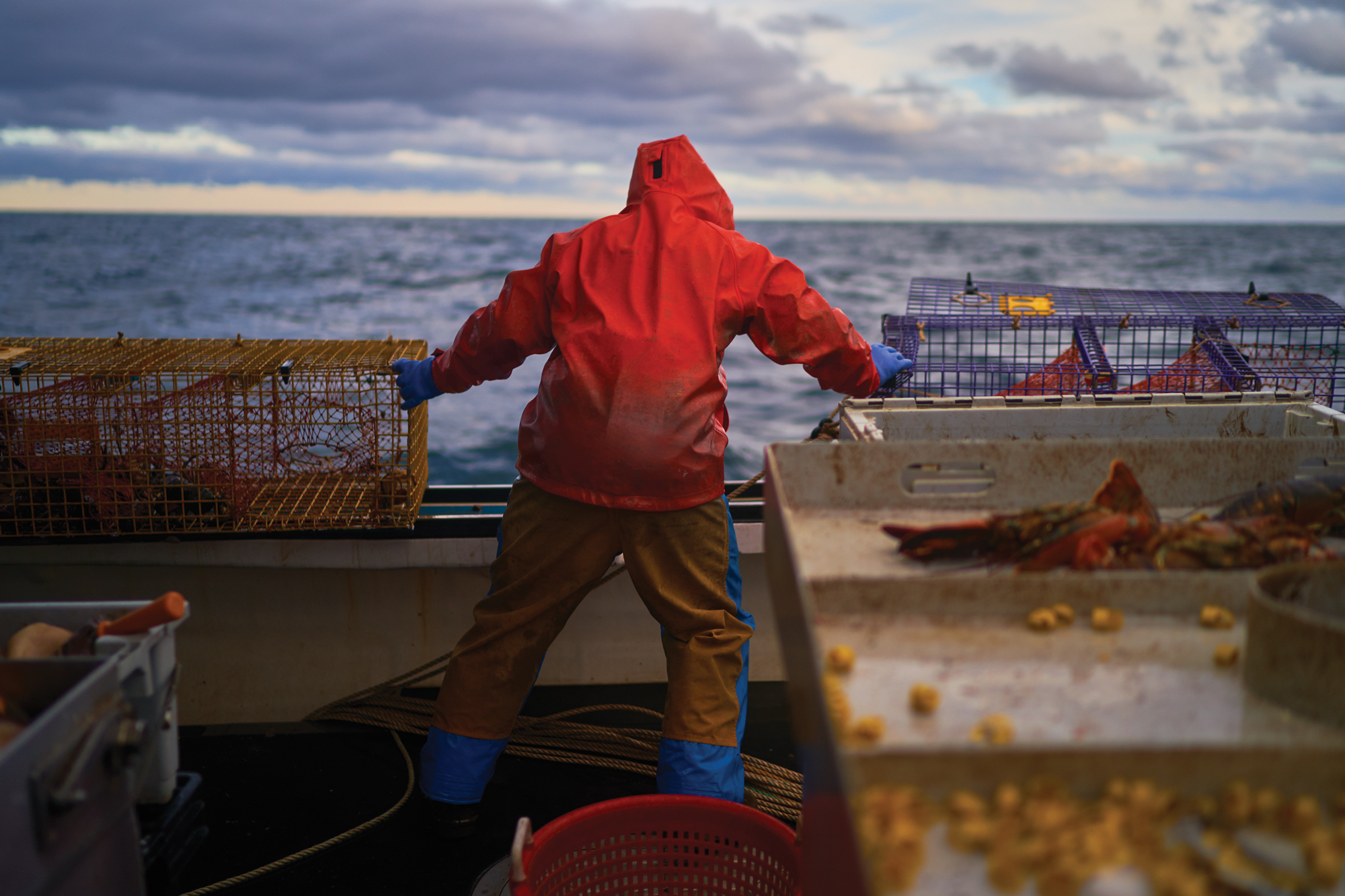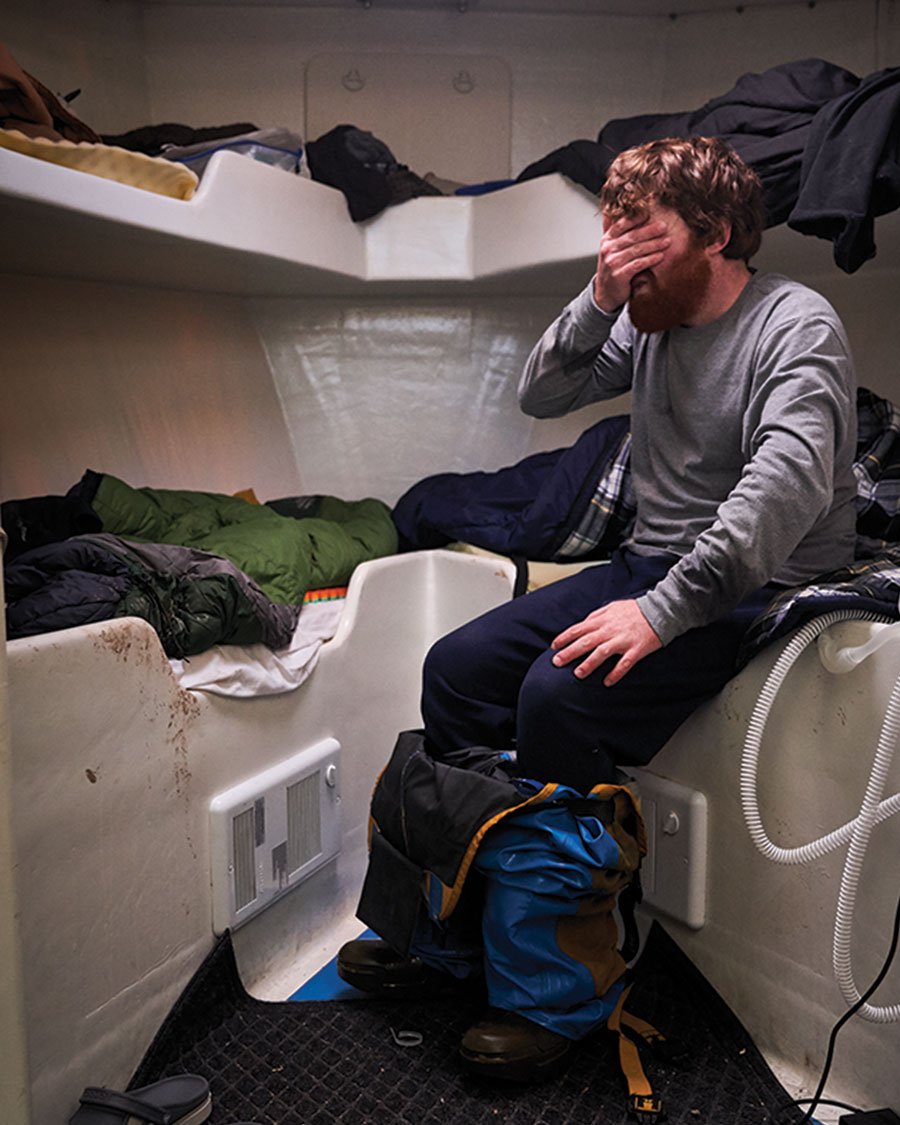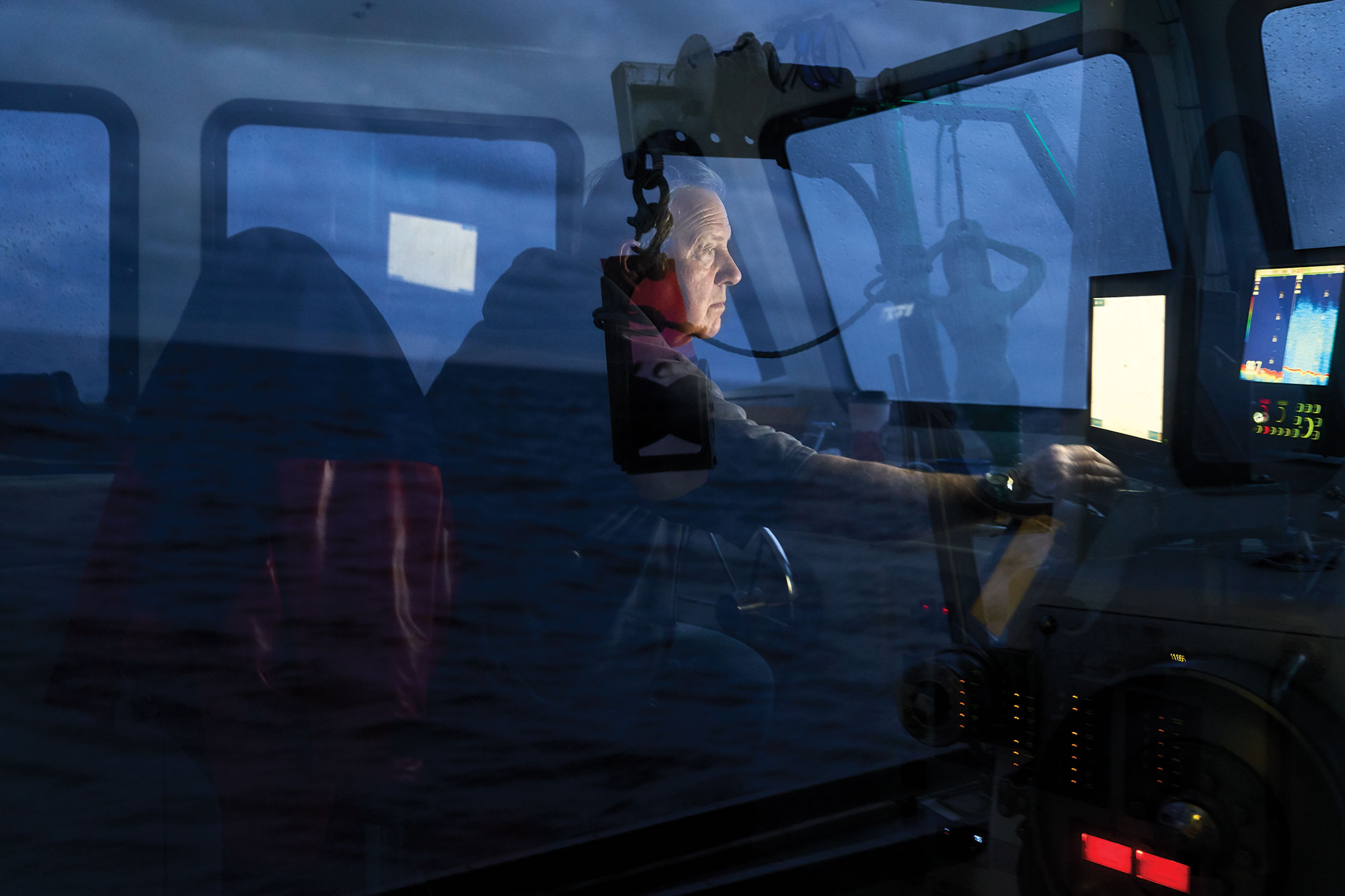OFFSHORE
Dylan Smith, sternman aboard Sea Glass, loads a tote containing more than 100 pounds of lobsters into the fish hold. The fishermen navigate the boat’s open stern while motoring at up to 12 knots in high seas.
In the pre-dawn of a winter Sunday, as most of Maine sleeps, 68-year-old Richie Walker starts the motor on Sea Glass, his 45-foot lobsterboat. A cup of gas station coffee in one hand, the throttle in the other, he eases from the dock and motors past the Rockland Breakwater.
“I don’t get much sleep when I’m out here,” he says, his breath visible in the cold of the cabin. “It’s mostly just fishing.”
It’s the start of a 20-hour day for Walker and his crew, as they head some 45 miles offshore — a four-hour run — to where Maine’s lobsters typically migrate in the winter, scuttling at depths of up to 600 feet.
Just a fraction of Maine’s lobstermen fish offshore. For starters, it takes a bigger (and more expensive) boat than those composing most of Maine’s fleet, both to handle rougher waters and to accommodate crew during the multi-day trips that make long treks to the fishing grounds profitable. Navigational equipment is expensive, as are the necessary federal permits. And the work is demanding.
“There’s good money to be had,” says Walker, who has fished offshore for more than a decade, “but only if you work all the time chasing them.”
That money is starting to lure more lobstermen offshore. And if a warming Gulf of Maine pushes lobster populations into deeper waters, as many scientists predict, much of Maine lobstering in another few decades may resemble the work that Walker is doing today, out where there is no cell service, no island stopovers, no land in sight — just three men, a boat, and the relentless shock of freezing sea spray as they race to haul as many traps as they can.




Third man Mitchell Carney moves a freshly baited lobster trap, one of 20 on a trawl line, to the stern before it’s dropped back into the ocean. In the background, Walker and Smith remove lobsters and rebait traps. Frigid, 25-mph winds kick up sea spray as Smith measures a lobster to determine whether it’s big enough to keep; a mermaid tied to the winch on Sea Glass; Walker grabs a trawl line fastened to lobster traps and brings it into the boat — he’ll haul 320 traps by day’s end. Below: Carney, Smith, and Walker separate lobsters and crabs into 100-pound totes, which they’ll sell to a fish buyer from Boston.


Sternman Smith carries a baited lobster trap to the stern. After plucking the fresh lobsters, the traps are baited again and stacked at the stern until all 20 traps on a trawl are returned to the ocean. Trawl lines cannot exceed 1½ miles in length and must have an anchor on each end.



Third man Carney slides a lobster trap along the rail of the boat. He and Smith work in tandem, seamlessly and silently sliding traps back and forth, removing live lobsters and re-baiting. Sea Glass, a 45-foot, Canadian-made Dickson boat, lists to one side in high seas; Carney, his fishing bibs around his feet, rubs his face in exhaustion during a 10-minute lunch break from hauling traps. Below: Walker looks at his instrument cluster while navigating Sea Glass. The three-man crew uses every hour of daylight to haul traps and generally spends a full 48 hours offshore, taking turns sleeping in the berth.




